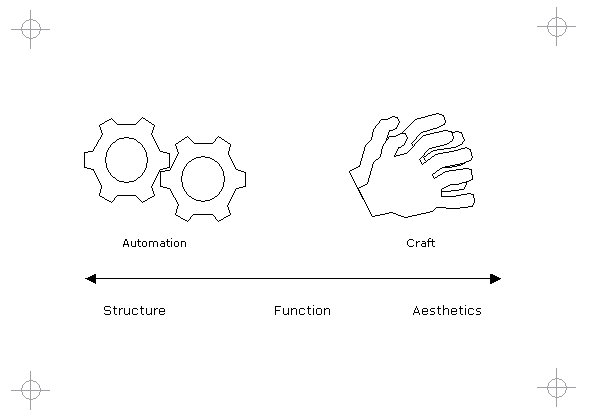|
Diagram
|
|
|

|
|
Title
|
|
|
Automation and Craft
|
|
Building Architecture
|
|
|
Machines were used to produce classical imitations. Machines used in arts and crafts led to the English Arts and Crafts Movement which in turn led to Modernist art and architecture.
|
|
Architecture Intensive Disciplines
|
|
|
The use of Computer Aided Software Engineering (CASE) tools can help to automate processes in the software development life cycle. It can reduce human error and minimise human intervention in programming. While programming can introduce errors, without it programs invariably lose function and aesthetic appeal derived from crafting program code. Applications developed using case tools or those that adhere tightly to an architectural design, are often criticised for their rigid look and feel or lack of user friendliness. It is important to craft applications in order to make them more intuitive - particular in their human-computer interface design.
|
|
Case Study A: Large Corporate IT
|
|
|

|
|
|
With the size of the development teams, it was necessary to provide some automation tools. By automating the configuration of the user interfaces through a repository and framework, more time could be focused on the back end programming where we strategically wanted to implement the business logic due to the large transaction and reporting volumes. We had automated some of the manual processing and were able to achieve daily file processes which previously were done on an adhoc basis.
|
|
Case Study B: Small Commercial Team
|
|
|

|
|
|
The craft was more important in this case. The source code was large. Many of the methods used cut and paste sample code downloaded off the internet. Some procedures could take up over 40 pages (A4) when printed. While some of the code could be reverse engineered, there was a lot of tedious work required simply to correct the code.
|
|
|